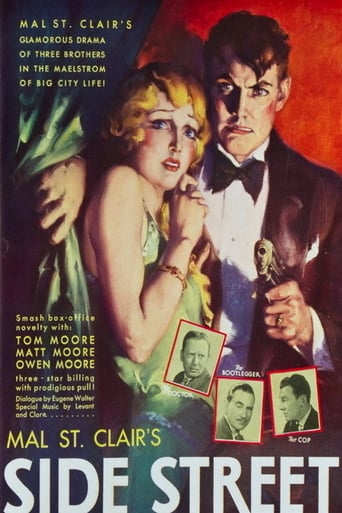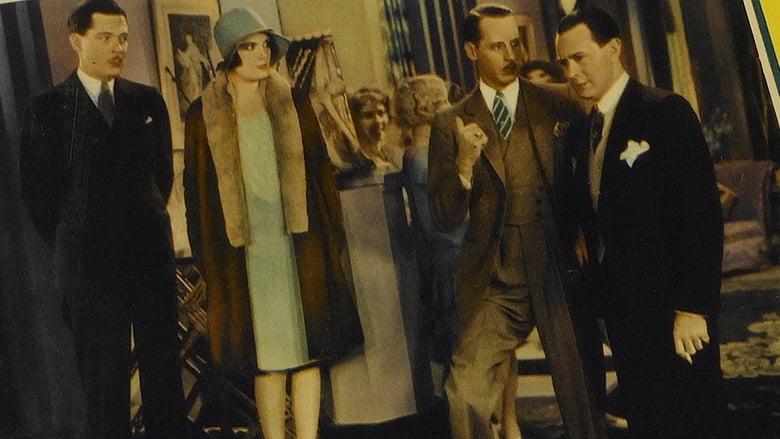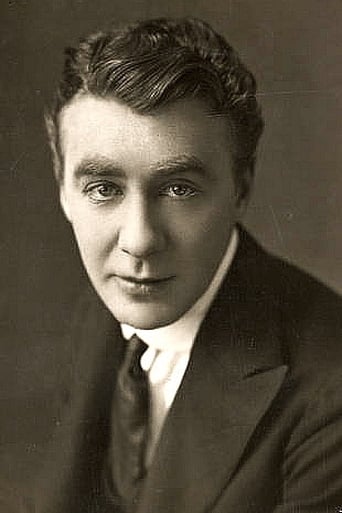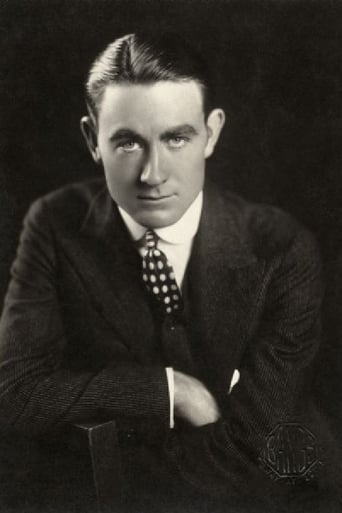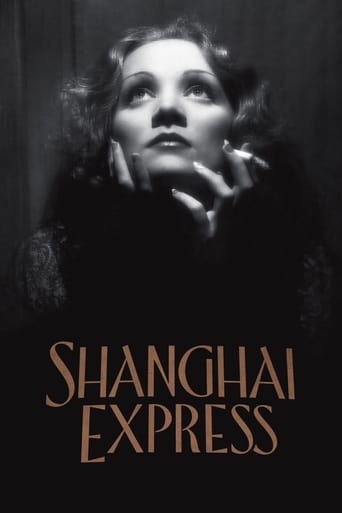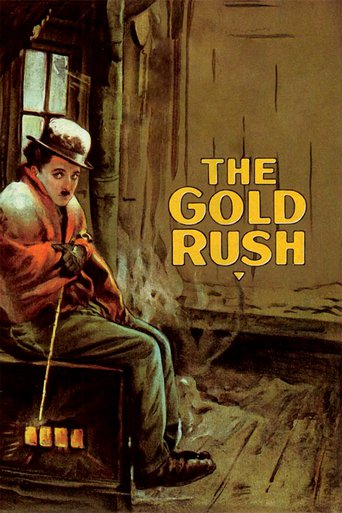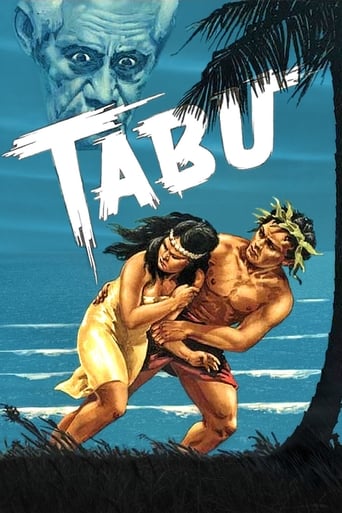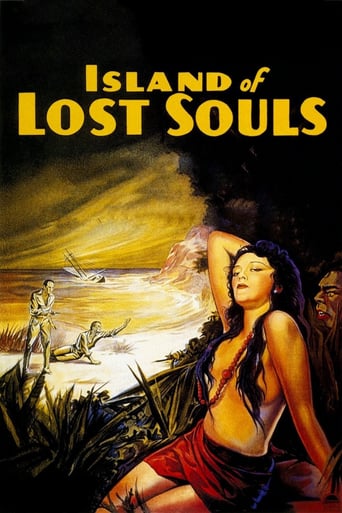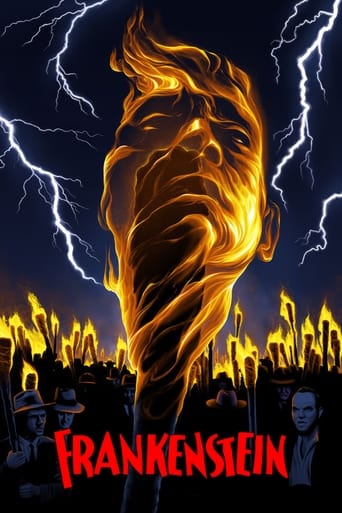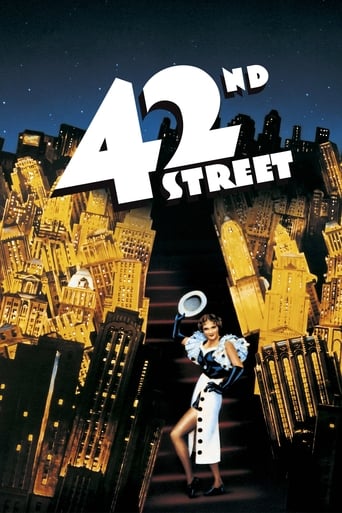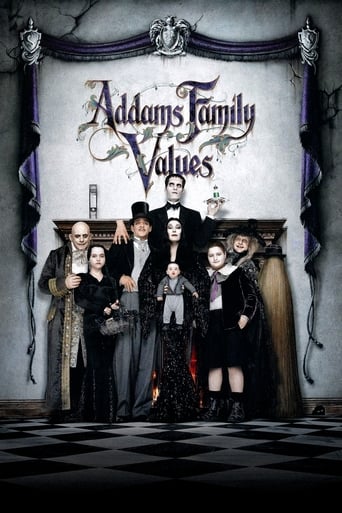Side Street (1929)
Three New York Irish brothers cross paths as policeman, doctor and bootlegger.
Watch Trailer
Free Trial Channels
Cast


Similar titles
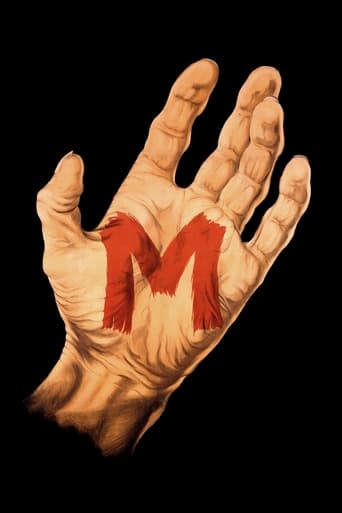
Reviews
Plot so thin, it passes unnoticed.
Let's be realistic.
Clever, believable, and super fun to watch. It totally has replay value.
After playing with our expectations, this turns out to be a very different sort of film.
Three sons of Irish immigrants live and work in New Your City. They are blond doctor Matt Moore (as John O'Farrell), jovial policeman Tom Moore (as Jimmy O'Farrell) and mysteriously well-dressed Owen Moore (as Denny O'Farrell). The trio gather for dinner with their parents. Nobody suspects gift-bearing brother Owen is wealthy due to engaging in criminal activities. They think he's just a businessman who travels. Owen's real-life wife Kathryn Perry (as Ton's fiancée) and her brother-in-law John have eye-opening moments. You won't have trouble figuring out what happens between Owen and his brothers...Written and directed by Malcolm St. Clair, this was his first real "all-talking" picture and the veteran filmmaker is clearly restricted by the microphone...The main attraction, at the time, was seeing the three Moore brothers perform in a sound film, together. However, by 1929, this couldn't have been much of a lure. Their great appeal isn't exactly clear in "Side Street", so looking back is recommended. The brothers were present early on, and became much bigger stars when Owen was discovered to have married Mary Pickford. She was the gold standard. The more recent generations of film-goers will enjoy watching George Raft in a small, but very impressive role. A future "gangster" genre film star, Mr. Raft was quite a dancer; he and June Clyde make good impressions.**** Side Street (9/8/29) Malcolm St. Clair ~ Owen Moore, Tom Moore, Matt Moore, Katherine Perry
From the time fresh faced George Raft asked "Barney Muller" (Owen Moore) to take a look at a number he had been rehearsing with the girls and the few minutes of dance I loved this movie!! George Raft was one of New York's top dancers during the twenties and reputedly the fastest charleston dancer in the world - even Fred Astaire sang his praises. Here he got a chance to show the public his absolutely amazing ability as a dancer, his legs flew in every direction, the chorus girls backed him up and cute as a button June Clyde, who next year had her fleeting chance at stardom, sang "Take a Look at Her Now"!!! George also had a couple of talking scenes and proved he was the most natural and relaxed member of the cast. For the rest of the time this movie was a pretty "deadly" affair, the novelty being that it showcased the three Moore brothers (in 1929 did anyone really care). Beautiful Kathryn Perry of the Ziegfeld Follies was the female lead and seeing that she was Owen Moore's real life wife, you could say it was a family affair!! The story revolves around an Irish family (with accents so thick you could cut them with a knife and fork). John (Matt Moore) a doctor, Jimmy, a policeman (Tom Moore - was he in reality a policeman who was just moonlighting as an actor!!!) and Billy (Owen Moore) who was the town's big crime boss - although no one in the family knows. I don't really agree with the reviewer who thought Owen was the most at ease in front of a microphone - I thought he was pretty ill at ease, especially in the family scenes. I think it showed how much progress was made in just a year when you compare this crime film with movies like "Little Caesar" and "Doorway to Hell", both from 1930.Jimmy's fiancée Dora (I know she is listed as Kathryn but it sounded like Dora to me) goes to a party with her friend Bunny (Mildred Harris, Charlie Chaplin's first wife) at the penthouse apartment of Barney Muller. Later that night a fight breaks out and Dr. John is called. By the end of the movie everyone (even the guileless mother Emma Dunn) realises just who Billy really is and joins in the effort to keep Jimmy, who hasn't yet twigged as to who Muller really is, away from the block of flats where he has an appointment - with death!!!For a gangster movie it was awfully static - it was Radio's first talkie. Radio was a subsidiary of General Electric and had developed it's own talking system, Photophone, which they claimed was the most superior, so they could go into talkies a lot sooner than their bigger studio rivals.
There are so many interesting experiments from this time, when things were still forming and genres hadn't formed.This is a combination of three story forms. One is the sweet mama form. We have an Irish family, full of mostly endearing stereotypes. Tipsy Dad, daftly wonderful mama. Three sons played by three brothers.We have the form of the brother against brother with predictable results. These two are uninteresting. The one that is interesting is how they try to play with the detective fragment. One of the boys is a detective. He's the Mama's boy and as stupid as she is. Another boy as it turns out is the town's biggest gangster working under a different name. Much is made of the cluelessness of the Irish cop, promoted to detective. We learn before he does. Then we see his brother (the third son) learn, and then his fiancé, and finally his father. Yet he goes to an ambush (on Thanksgiving!), blissfully ignorant.The production values are low, but its an interesting experiment if you follow how narrative evolved during this period.Ted's Evaluation -- 1 of 3: You can find something better to do with this part of your life.
This is one of RKO's first films. It's also the only pairing of all three Moore brothers. It also features nightclub dancer George Raft in one of his first attempts to break into films (after this he didn't appear again until 1931 when he was "discovered.") Sadly, this film is all curiosity value and nothing else. The Moore brothers are mostly terrible (Owen, playing the gangster, being the only one with any talent for handling dialogue). Raft is actually better and livelier than the Moore boys even though his part is slim. There is also no music score whatsoever, outside of the nightclub sequence with Raft, thus what little dramatic force the film has is left dry by the silent soundtrack. The story is the typical brothers-gone-separate-ways stuff (one is a cop involved in murder case that leads to other brother who is gangster) with the only difference being that there is a third brother (a doctor) in the middle. But the Doctor's part isn't very interesting, so it doesn't distract from the clichés, unfortunately. Sound killed the Moore brothers' careers and this film easily shows us why.

